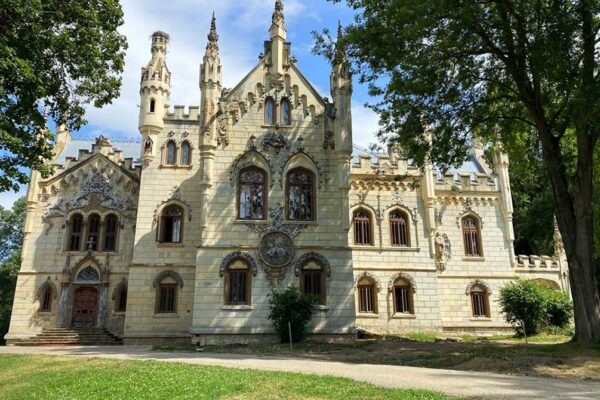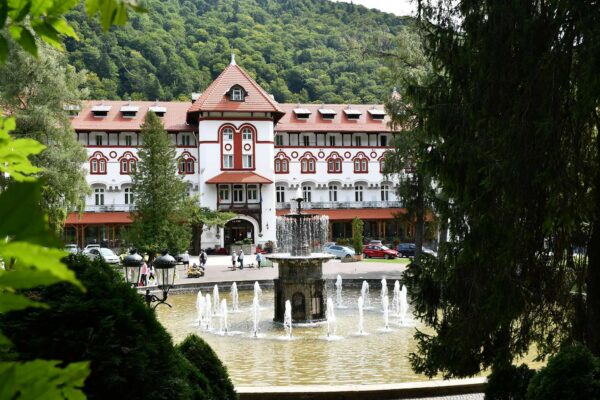
Feb 11, 2024 “Alphaville” live at the Palace Hall in Bucharest
27 November 2023
Pleiada Boutique Hotel Iasi | Feel-good paradise in the Moldova region
30 November 2023Hidden, almost forgotten, not completely closed | Sibiu’s inner courtyards – an insider tip for loners
“Green is the most important color of a city,” Constantin Noica is said to have said. The cult diary “Jurnalul de la Păltiniș” gives an idea of how often Gabriel Liiceanu and Andrei Pleșu stopped off in nearby Sibiu on their visits to their mentor in a log cabin in the High Gully of the Zibins Mountains/Munții Cindrel around 45 years ago. They either traveled by train to Sibiu and from there by bus to the Hohe Rinne, or by Trabant from Bucharest to their destination. Keyword car – of course it contradicts the hint of urban green that Maestro Noica is said to have. Sibiu, which he thought highly of, proves him right the more the world progresses and his vision recedes. Wherever a car fits through the old gate to the alley, there is usually one in the courtyard. But there are also plenty of counter-examples. Because time has often stood still in the lower and upper town.
And that’s a good thing. Parks are the green lungs and completely car-free inner courtyards are the airways of a city. Public the former, private the latter. Much to the chagrin of tourists and locals alike, who are only too happy to seek out some quaint views of Sibiu from the inside, but can’t find any clues as to where to discover hidden corners. They are not dead, as in the case of neglecting to look over the shoulder when driving, even though people often live so simply and modestly in central Sibiu that you would never expect to find any eye-catchers behind so many street gates without any trace of a sign. Southwest Transylvania’s largest city makes it very easy for visitors who want to check it off in fast motion.
It takes courage to explore new territory, to save the Brukenthal Museum or the Protestant parish church on Huetplatz, including the tower ascent, for another time, and instead drop the self-imposed obligation to behave impeccably on the street that has been well-educated from an early age. A cautious glance through the keyhole, a crack in the gate or the mail slot if there is no one on the same side of the street in good behavior? Go ahead! This is exactly the tactic for spotting green courtyards. But be careful: please avoid using such tricks as a tour group! You’re welcome to go picture hunting alone or in pairs in the touch-sensitive gray area between public and private, but never in a crowd. Three or at most four curious people is the maximum. A little etiquette is a must.
Good knowledge of Romanian too. Although some of the doors are neither locked from the inside nor creak when opened. Which is hardly to be expected of biblically old doors. So it is often easier than you might think to gain unnoticed access to the inner courtyards. And if you are caught in the act by an inquisitive person who lives in the house in question, which may be five or six centuries old, you don’t need to freeze into a pillar of salt out of decency. A friendly greeting to the locals, followed by a brief self-introduction, presented with a sincere dash of humility, works wonders with the people in question, who naturally don’t like to be taken by surprise by strangers. It is up to the polite guest to pre-empt the awkwardness of such an encounter routinely, confidently and elegantly. The best chance of not being asked to leave is for those with a flair for complimenting the magic of Sibiu’s unmistakable courtyards.
Once you’ve got the right vocabulary working for you, the landlady or landlord immediately rewards you with a lively conversation. Hardly a single person or family lives in a single historic building in the heart of Sibiu, and Romania’s demographic peculiarity means that pensioners in particular own their own homes everywhere in the conservative middle-class town centers – some of them for 50 years or more. These are die-hards who no longer go to work and stay at home all day.
If you approach them in a friendly manner, they do the same. “It could have been that a descendant of the Transylvanian Saxon family from Germany who sold my parents their apartment back then would like to drop by!” In fact, they all have what it takes to be a children’s paradise, these courtyards standing in their own juice without smoothly cut grass. “20 families lived in the house,” recalls the owner of the garden at the end of a cul-de-sac in the lower town. Could there have been anything better in the past than growing up surrounded by natural green spaces, where the sound of children and not the roar of lawnmowers could be heard?
Although people in communist Romania had to bow to the constraints of living in confined spaces, it was probably somehow idyllic in Sibiu back then, before the age of telephone systems instead of buzzing doorbells and electronic chips instead of hand-sized gate keys. The snap lock, on the other hand, has a certain advantage for strangers whose entry it is supposed to prevent: pushing the door to the alleyway shut behind you until it clicks shut is even easier to forget than turning the key. An unexpected gift that should always be on the radar of the attentive, provided they don’t act like burglars when unpacking. Unforgettable escapes into worlds thought lost can be achieved by those who delicately feel their way forward.
ADZ | Allgemeine Deutsche Zeitung für Rumänien
Images & Text: Klaus Philippi













